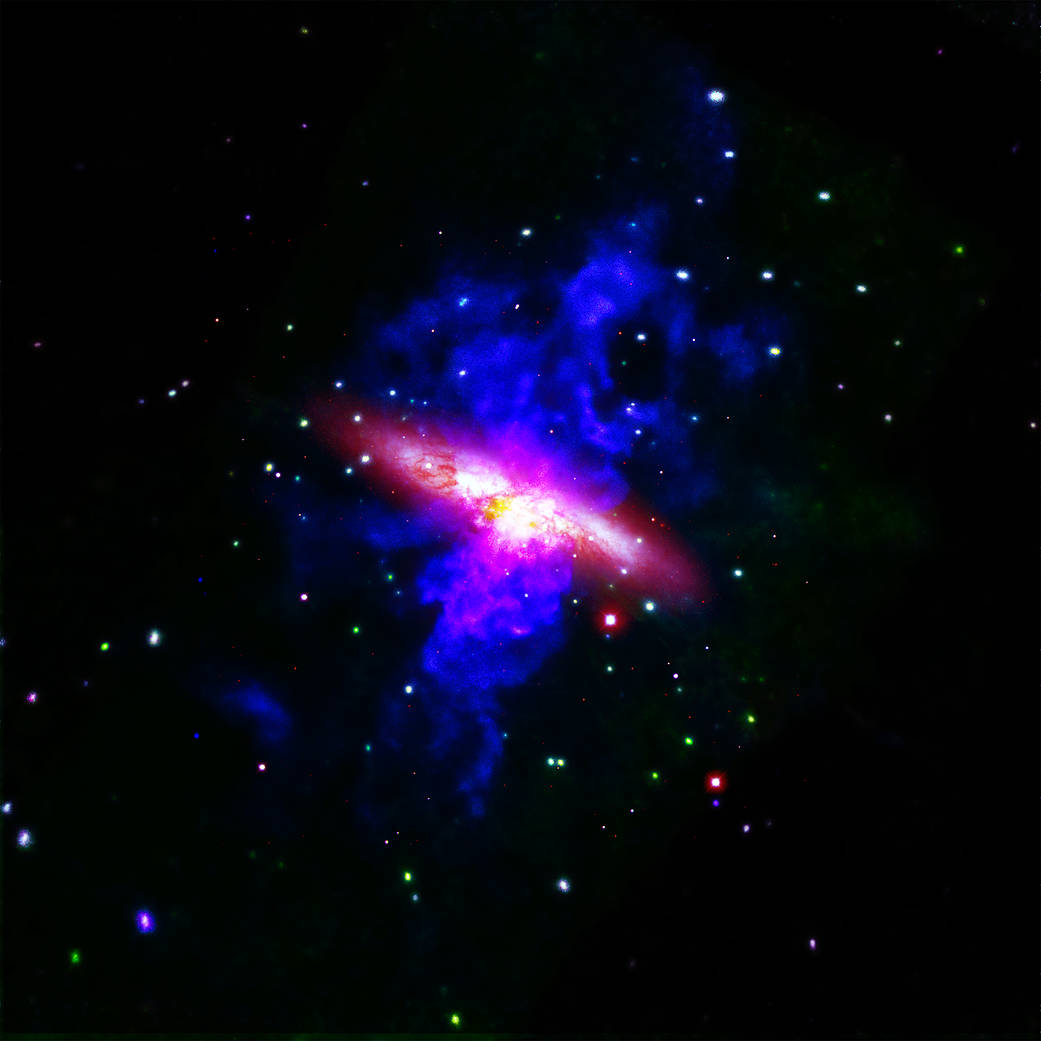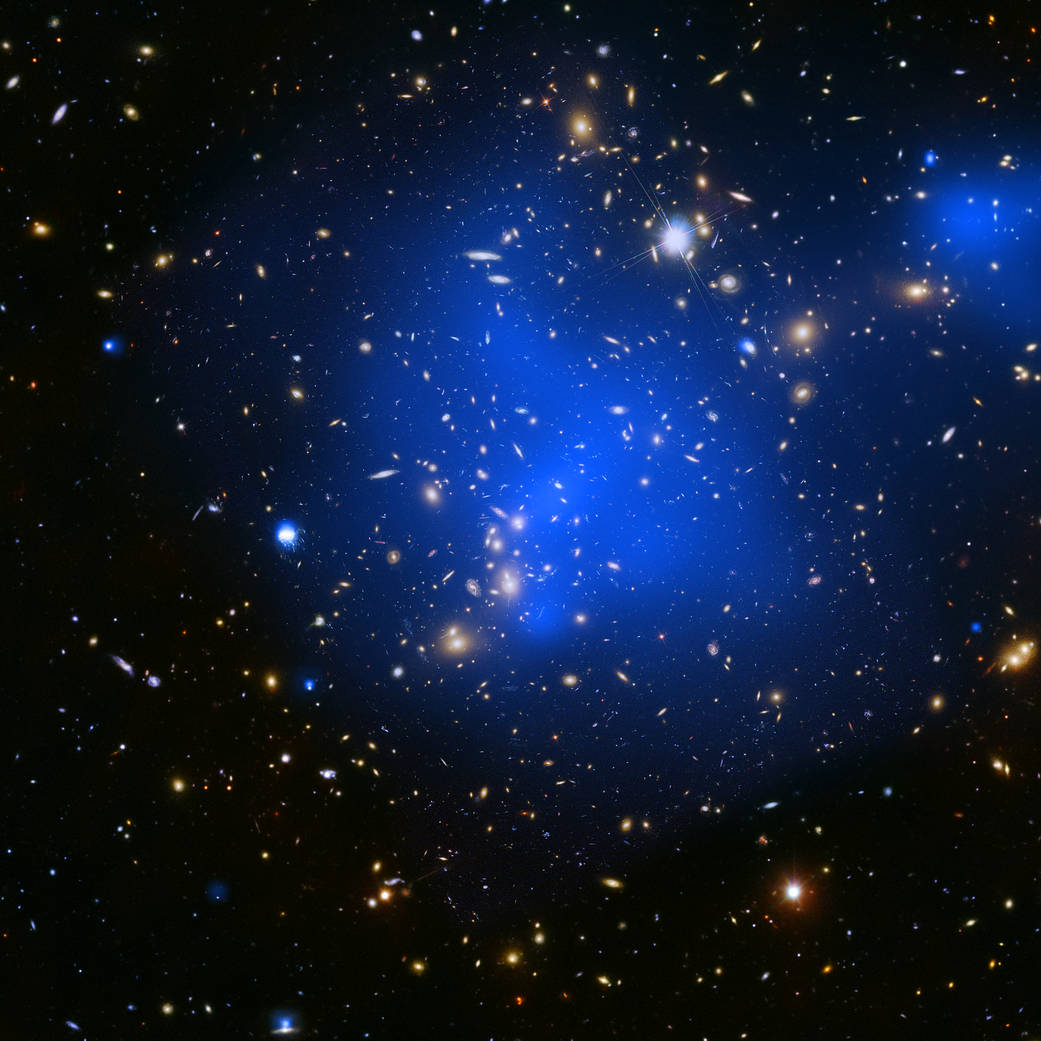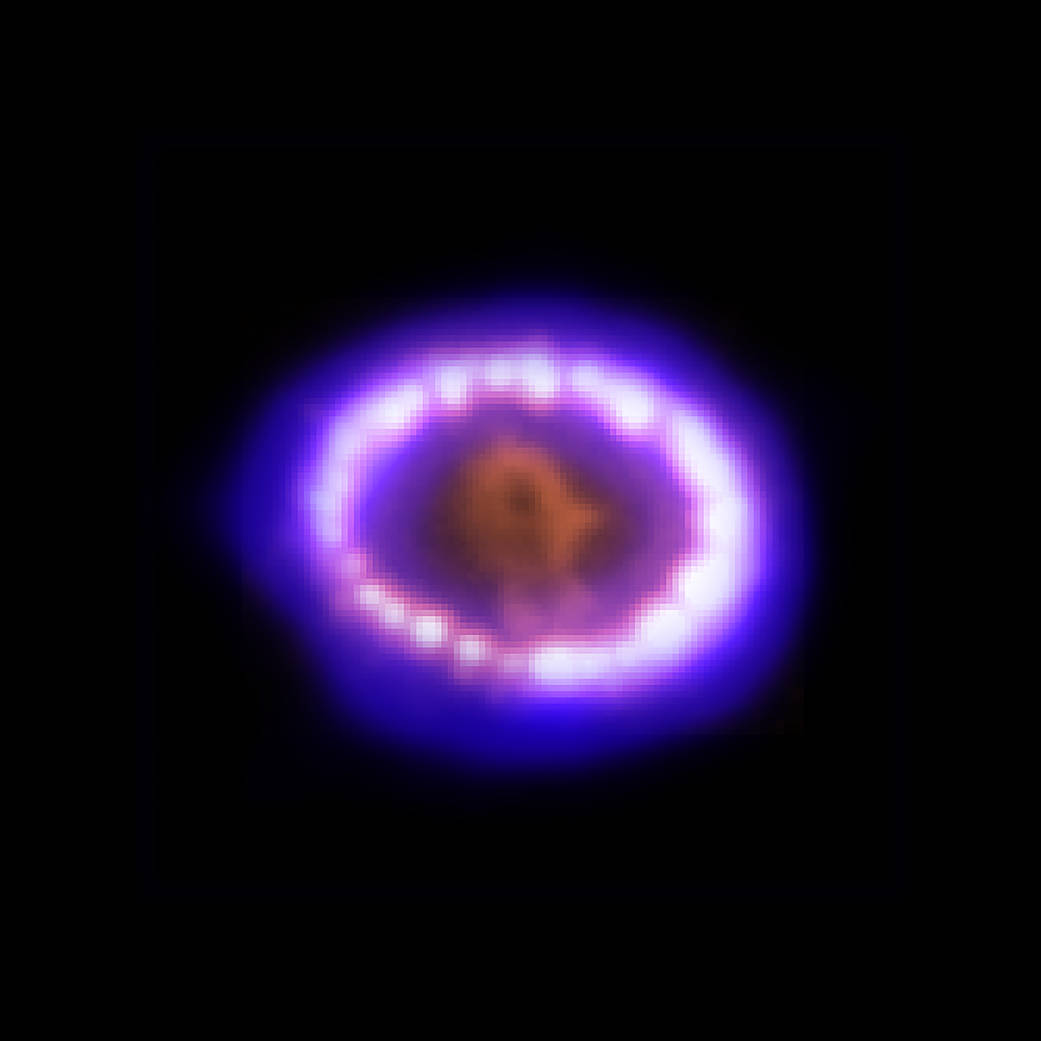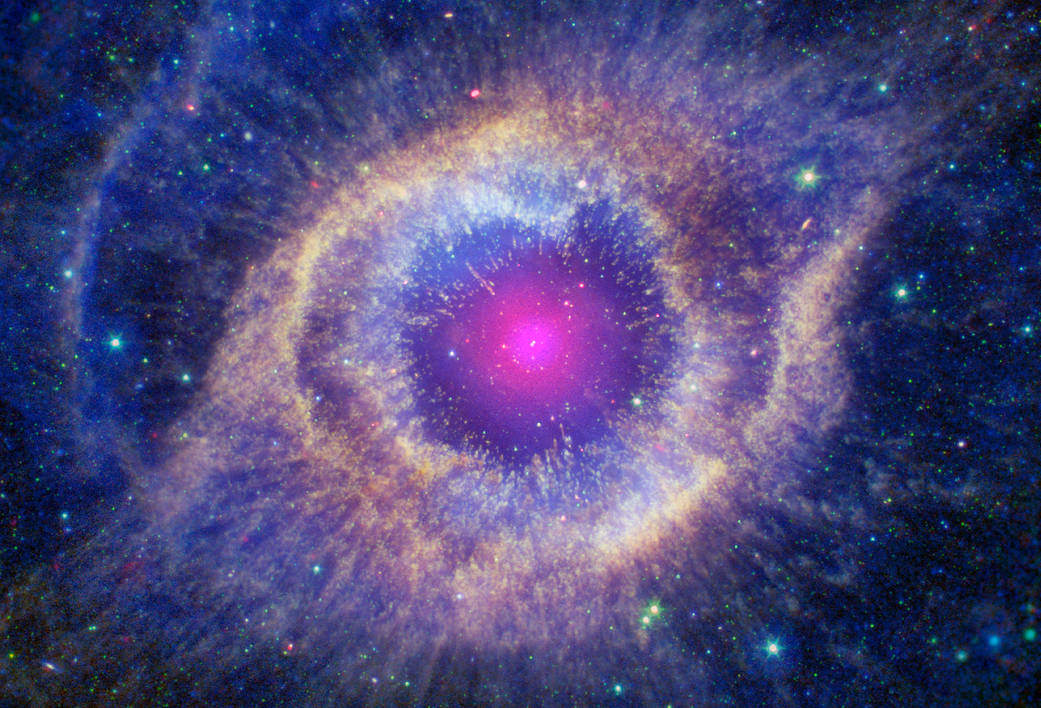Stunning images from Hubble, Chandra, and more reveal value of space telescope teamwork
What do you get when you put a space telescope to work with another space telescope or two? Amazing compilation images of our universe.
NASA recently highlighted some collaborations between its Chandra X-ray Observatory and other telescopes, particularly the Hubble Space Telescope, showing what sorts of images can be produced when you look at the same object in different wavelengths of light.
Gallery: Amazing nebula photos from Chandra & Hubble
M82
The galaxy M82 can be seen edge-on from Earth, allowing scientists a great perspective whenever star formation occurs, since there is little to block our view. Chandra observations, visible in blue and pink, show bursts of high temperatures created when gas is heated by supernova explosions. The Hubble Space Telescope's optical images (shown in red and orange) reveal the galaxy's shape.
Abell 2744
The galaxy cluster Abell 2744 includes a lot of superheated gas that glows brightly in X-rays. The X-rays are seen in Chandra data as blue clouds, juxtaposed with the optical light detected by Hubble and shown in red, green and blue. Galaxy clusters are enormous collections of galaxies held together by gravity, and these behemoths teach astronomers about the structure of the universe.
Supernova 1987A (SN 1987A)
A supernova explosion that occurred on Feb. 24, 1987, is still producing valuable scientific data a generation later. Telescopes regularly revisit Supernova 1987A to see how its gas and dust morph over the years. Chandra data (in blue) show the shockwave of the supernova hitting a shell roughly four light-years in diameter of material surrounding the exploded star. Hubble's view also shows some of the interaction in optical wavelengths, shown here in orange and red.
Eta Carinae
Eta Carinae is a potential supernova location in the future, since it hosts two massive stars orbiting one another and interacting chaotically through gravity and material. Chandra X-ray data here appears in purple, optical data from Hubble shows in white, and ultraviolet Hubble data is visible in cyan. "The previous eruptions of this star have resulted in a ring of hot, X-ray emitting gas about 2.3 light-years in diameter surrounding these two stars," NASA officials said in a statement released with the images.
Breaking space news, the latest updates on rocket launches, skywatching events and more!
Cartwheel Galaxy
Astronomers think the strangely shaped Cartwheel Galaxy arose when a smaller galaxy passed through the middle of another object. The collision created shock waves of gas that spurred star formation. Chandra X-rays (in purple) show the hot gas that was pulled 150,000 light-years away during the collision. Hubble's optical data (red, green and blue) show where the collision may have caused star formation.
Helix Nebula
The Helix Nebula shows the future of our sun. In about 5 billion years, the sun will run out of fuel to burn and its outer layers will peel off, leaving behind a cooler core known as a white dwarf. Chandra shows the X-rays surrounding the white dwarf star (white), and you can view data in optical wavelengths from Hubble (orange and blue), ultraviolet from NASA's Galaxy Evolution Explorer (cyan), and infrared from NASA's Spitzer Space Telescope (green and red). The scene stretches across roughly four light-years.
Follow Elizabeth Howell on Twitter @howellspace. Follow us on Twitter @Spacedotcom and on Facebook.

Elizabeth Howell (she/her), Ph.D., was a staff writer in the spaceflight channel between 2022 and 2024 specializing in Canadian space news. She was contributing writer for Space.com for 10 years from 2012 to 2024. Elizabeth's reporting includes multiple exclusives with the White House, leading world coverage about a lost-and-found space tomato on the International Space Station, witnessing five human spaceflight launches on two continents, flying parabolic, working inside a spacesuit, and participating in a simulated Mars mission. Her latest book, "Why Am I Taller?" (ECW Press, 2022) is co-written with astronaut Dave Williams.






